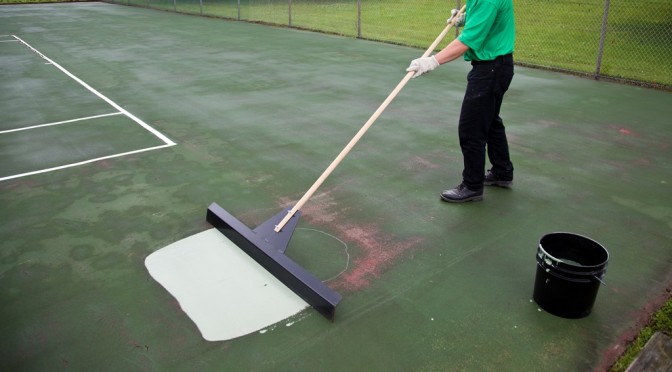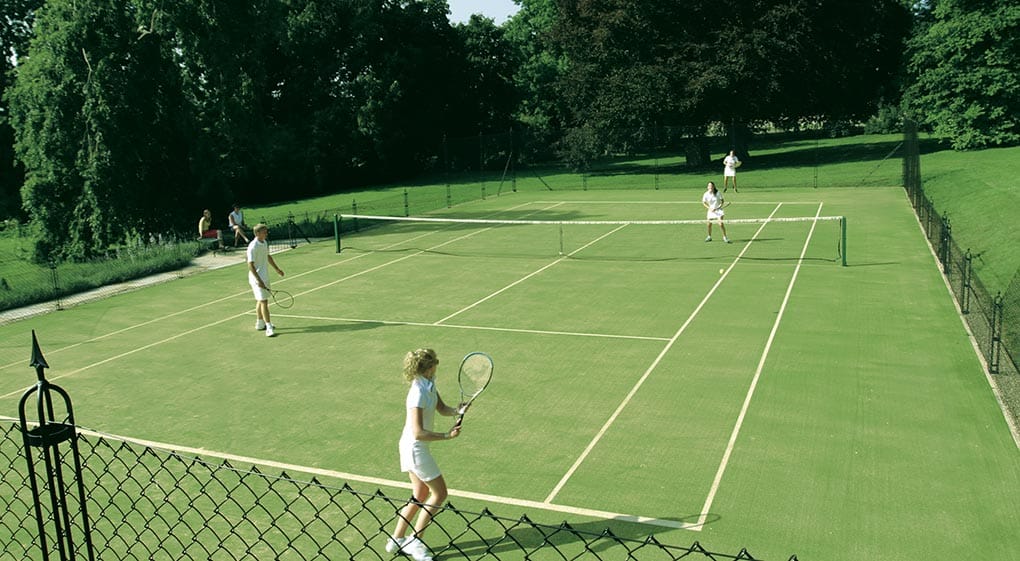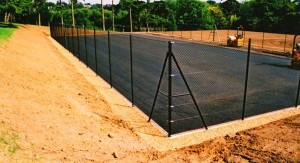The Tennis Court Creation Diaries
This surface provides a highly practical alternative to traditional clay tennis courts, but with a similar appearance and play characteristics, available for year round play. Unlike traditional clay, there is no costly reconstruction each spring and no need for expensive irrigation. Artificial clay tennis courts combine low maintenance with high availability - tennis court creation.
A porosity and levels check will be undertaken prior to installing the stability mat and we will advise whether a macadam regulating layer is recommended. The mat is in-filled with a red ceramic infill that is installed to cover the mat. The top of the stability mat should be at least 50mm below the level of the perimeter edging to prevent wind lifting the edges of the mat and contain the unbound fill at the perimeter.
Well over 60 courts have been completed since. You can see these reference installation at the top of the column on the right. Advantage RedCourt® - artificial clay tennis courts. The loose laid stability mat is normally installed over a porous macadam base in the UK. The mat is infilled with a red ceramic like fill that is installed to cover the mat.
Some Known Details About Tennis Court Contractors
Tennis: Medium slow surface pace - uniform low bounce - allows some top spin and slice-positive “push off†with controlled slide, some resilience. ITF classified court pace rating: Category 2. tennis court designers. A surface that will be available for use throughout most of the year. Care is required in freezing conditions when the surface may be too slippery to use.
Excess infill is swept off the play lines, as on a traditional clay court. The main requirement is weekly drag brushing to keep the infill mobile and evenly distributed. If neglected the surface will become less even, compacted and slower draining, with greater risk of moss growth. In addition to weekly sweeping, it is advisable to have the court professionally maintained on an annual basis.

A clay court is a tennis court that has a playing surface made of crushed stone, brick, shale, or other unbound mineral aggregate. The French Open uses clay courts, making it unique among the Grand Slam tournaments. Clay courts are more common in Continental Europe and Latin America than in North America, Asia or Britain - tennis court contractors.
Little Known Facts About Tennis.

Although less expensive to construct than other types of tennis courts, the maintenance costs of clay are high as the surface must be rolled to preserve flatness. Clay courts favor the "full western grip" for more topspin. "Clay-courters" generally play in a semicircle about 1.5 to 3 metres (5 to 10 feet) behind the baseline.
Points are usually longer as there are fewer winners. Therefore, clay courts heavily favor baseliners who are consistent and have a strong defensive game, which has allowed players such as Rafael Nadal, Björn Borg, Chris Evert, and Justine Henin to find success at the French Open. Clay court players use topspins to throw off their opponents.
Playing on clay often involves the ability to slide into the ball during the stroke, as opposed to running and stopping like on a hard or grass court. Players who excel on clay courts but struggle to replicate the same form on fast courts are known as clay-court specialists. Clay courts are unique in that the ball bounce leaves an impression in the ground, which can help determine whether a shot was in or out.
Facts About Tennis Uncovered
All clay courts, not just red clay, tend to cause a build-up of clay on the bottom of the shoes of the players, needing frequent removal. Almost all red clay courts are made not of natural clay but of crushed brick that is packed to make the court, with the top most layers consisting of finely crushed loose particles.

The exact color of the surface varies with the composition of the bricks used, and can appear from a light yellow to a deep red. En tout cas (Fr. "in any case") is a version of red clay with a coarser top layer to improve drainage. The coarser surface allows more water to run through the surface of the court drying the surface more quickly after rain.

A good example of natural red clay can be seen at the Frick Park Clay Courts in Pittsburgh, a public facility of six red clay courts that has been in continual use since 1930 (tennis court creation). Green clay, also known as rubico or its brand name Har-Tru, is similar to coarse red clay, but is made from crushed metabasalt rather than brick, making the surface slightly harder and faster.
See This Report on Tennis Court Specialists
It is then covered with a topping. These courts are located primarily in the eastern and southern United States. There is one WTA tournament played on green Har-Tru clay courts, the Volvo Car Open in Charleston, South Carolina. From 1975 until 1977, the US Open was played on Har-Tru clay courts.
Nadal holds the record for the longest winning streak by any male player on a single surface since the tennis open era began in 1968: 81 clay court wins between April 2005 and May 2007. He also holds the record for most titles won on clay in the open era with 55 trophies.

Thomas Muster is also considered a successful clay court player; although he also only won the French Open once, 40 out of his 44 career singles titles were won on clay. On the women's side, Justine Henin and Monica Seles hold the record for the number of consecutive French Open titles won at three (1990–1992 for Seles and 2005–2007 for Henin).
The Of Tennis
Chris Evert holds the record for longest winning streak on clay for either gender in the open era: from August 1973 to May 1979, she won 125 consecutive clay court matches. During this time Evert skipped three editions of the French Opens (1976–78), to participate in World Team Tennis. She also has the highest career win percentage on clay courts (94.28%) during the open era.
tennis court creation